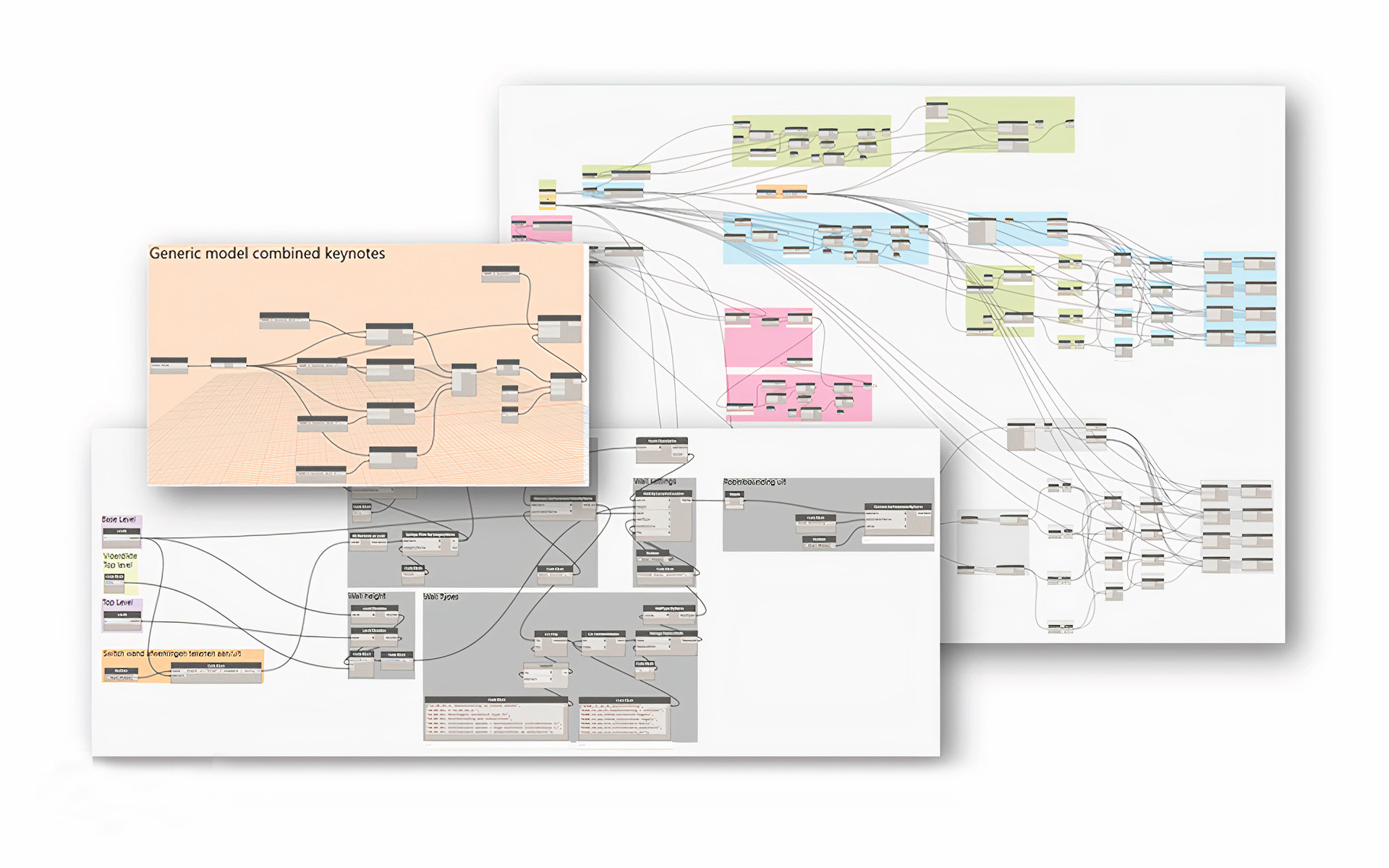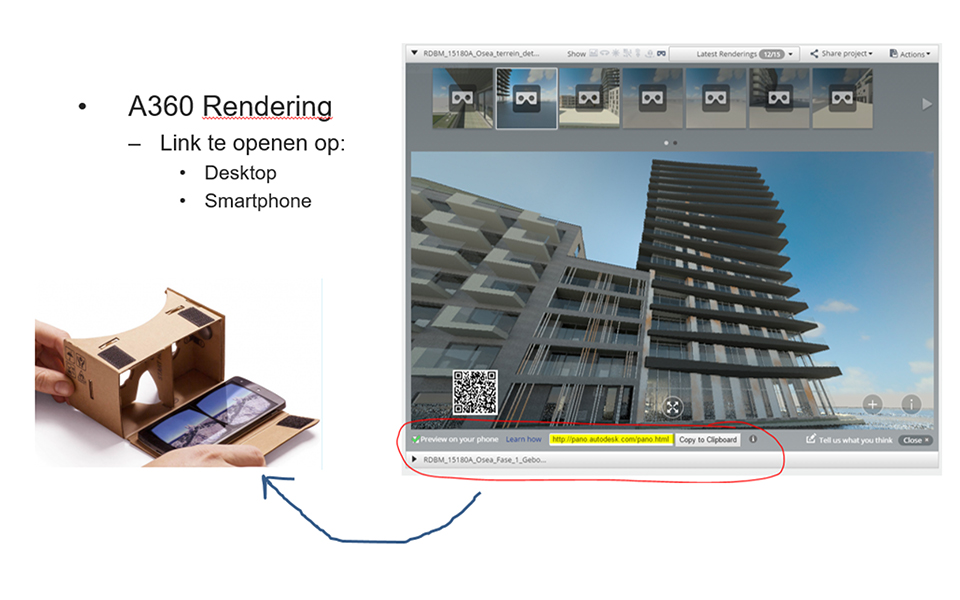A BIM journey
A BIM journey
The BIM story started for us in 2012. Together with Jan van Sichem from BIMplan, an plan was developed on how we could convert 2D CAD plans to 3D models. The idea was to start with a small BIM team that would develop in collaboration a BIM project as a pilot. That team consisted of Jan van Sichem, Rudy Willemeijns, Karen van Nuffelen, Christian van de Plasse and Stefan Dieben. The foundation of this team was broadly:
- A Bim/Revit specialist
- A family editor/creator
- Revit modellers
This composition of skills and characters are still a good mix to this day. As we started working on the pilot project: the VUB in Brussels, we gradually became acquainted with Revit. The team previously completed a 5-day Revit basic course at C3A in Ghent. The 3D models were built from 2D plans, that were made during the preliminary design. The basic elements such as walls, floors and roofs were quickly created. The more complex elements, such as windows and doors required a little more attention to create. Our Revit library of elements grew as a result. All Revit elements that would be created during future projects in the coming years, were collected in the library.

Because a design was developed in 3D, complex connections and details came to light that normally only become visible when you think about them. Or worse, only come forward during implementation, resulting in expensive solutions. Building in 3D in saves time and costs at the end.

After the pilot project was completed, more projects followed. Just like the number of Revit users, which also continued to grow. Because it is possible to work on a model with multiple Revit users, the idea arose that a model could be worked on from multiple locations. People no longer had to be physically present in the same office to work together. The Revit server was born and the internet speed had to be drastically increased.
The knowledge about Revit was growing and it had to be shared. Our BIM platform was born. Several times a year, all our Revit users come together and share feedback, tips and updates. New ideas are thrown on the table, to be developed. As a result, workflows continued to improve. Discovered and tested add-ins for Revit also came to light. Procedures that normally required many actions could be carried out faster and faster.

A small group of Revit users have also taken a MEP course. When working “single source”, what is modeled, is the truth. To complete a model, it is useful that drains, for example, are also modeled. This helps ensure correct implementation of the design.

After many years of collaborating and modeling buildings in Revit, the next step was to work together on the same virtual computer system. Virtual Desktop Infrastructure (VDI) offered the solution. Each user logs into their own session. Every session has the same programs, add-ins and settings. This makes troubleshooting easier because only one system is used. In addition, this offers the option of working from different types of devices. Even a mobile phone or tablet is even possible.
Sometimes when aspects and actions are required, but not possible by default in Revit, addins often provide the solution. It is also possible that there aren’t any addins available for the action. Then we make this possible ourselves by writing a script in Dynamo. Dynamo is a standard add-in in Revit that can do almost anything you could dream of. If you can put it in a script, Dynamo can execute it. By supplementing our workflows with Dynamo scripts, we can reduce the workload, which in turn benefits the designs. We make it smart ourselves.

Over the years, Autodesk also releases updates with new presentation options. A nice extra are the stereo panorama renderings. From the Revit model, you can place a camera point of view and have Autodesk's Cloud Service render the Stereo Panorama. The word “stereo” already gives it away a bit: it is a virtual panorama rendering in which you can look around from the camera point of view. And the icing on the cake is that you can view the image all around with a mobile phone in a Cardbox as if you were actually standing in the model.

The integrated rendering option in Revit, has always been possible. The options available there were quite limited. Vray, on the other hand, has a lot of options and the power to apply other textures that make an even more realistic image. Having light points illuminate the rooms to create the right atmosphere is also possible.

Revit models may look nice, but are they modeled correctly and without errors? We carried out these checks with Solibri and Bim Collab Zoom. The models must be coded correctly in Revit so that they can then be exported to a IFC file format. Then our models and those of external parties can be clashed together. Are walls and a doors on the right place? Are the floors drawn at the correct levels? Are the techniques neatly arranged in the shafts? These are all questions that are answered during such checks and shared with all parties in a coordinated manner.

We also started using more analysis software. What Revit cannot do, other software developers often make it possible. This makes it possible, if limits are sought, such as building heights, to make a wind study of the design. If the terraces of the houses are usable, would it not be better to place a critical terrace on another location? This also applies to light studies. Is there enough light? What is the quality of the space? We can optimize this in the design by analyzing it at an early stage.

Nowadays, when we start a new project, we first look in advance at which direction we would like to go and what is required. What construction details may be required and how should they be modeled? We work “Single-source” as much as possible; models must be and remain workable. Where do we place the models? Should external parties work on the same model at the same time? These are all important questions that can be asked at an early stage. Fortunately, a choice is not final, but it does save time.
The future that we hear a lot about these days and that we also see and use is Artificial Intelligence (A.I.). Complex mathematical questions and formulas can be asked and answered quickly. Where previously a lot of time was required to produce a realistically rendered image, A.I. can do this faster with less input that was previously required. A.I. is not as scary as it is sometimes described. We can harvest all the benefits, but we must be careful. Always check the output. We look to the future with full confidence, in which BIM management will become increasingly extensive and easier.
Written by Stefan Dieben, BIM coördinator CONIX RDBM Architects





